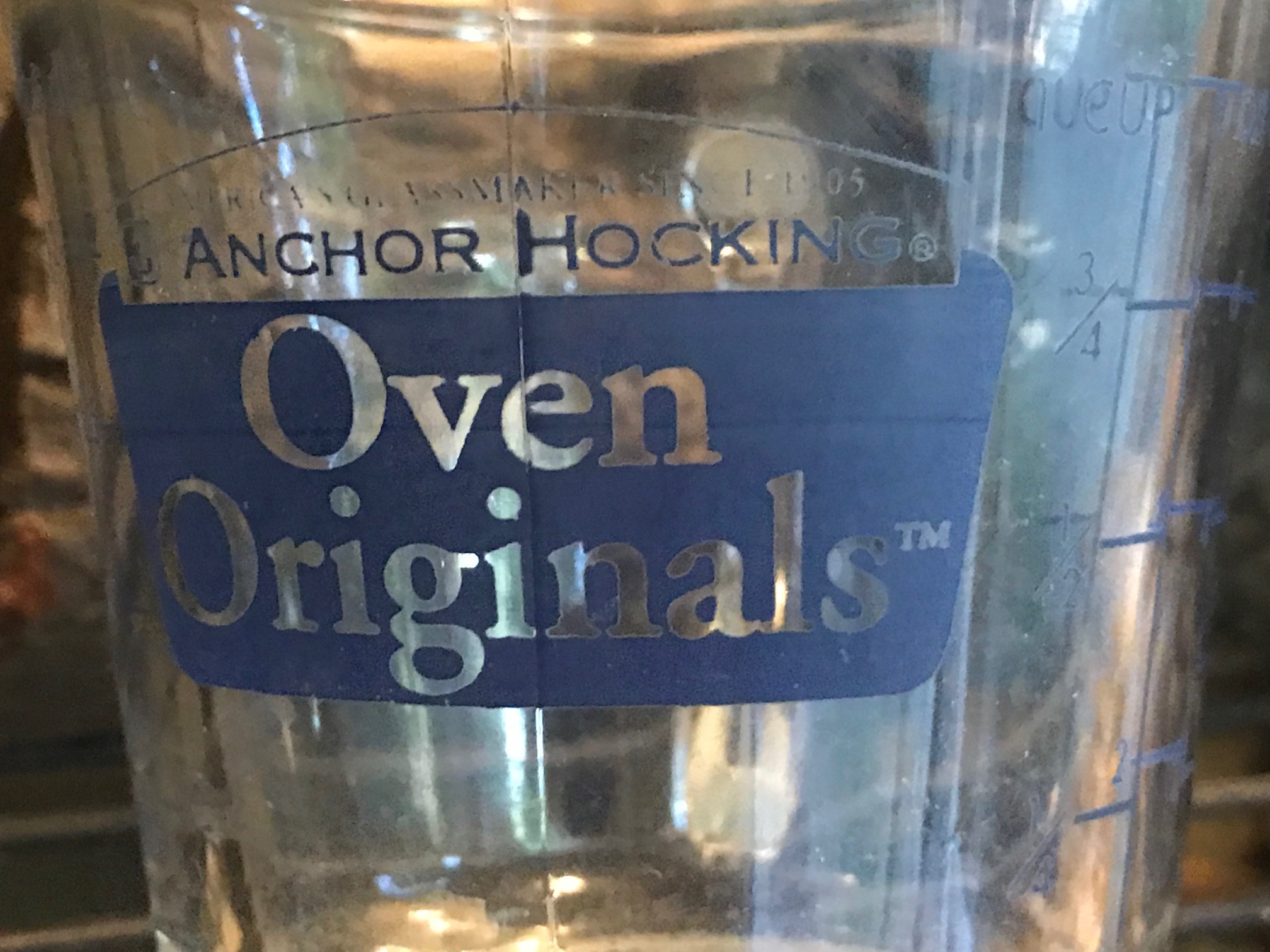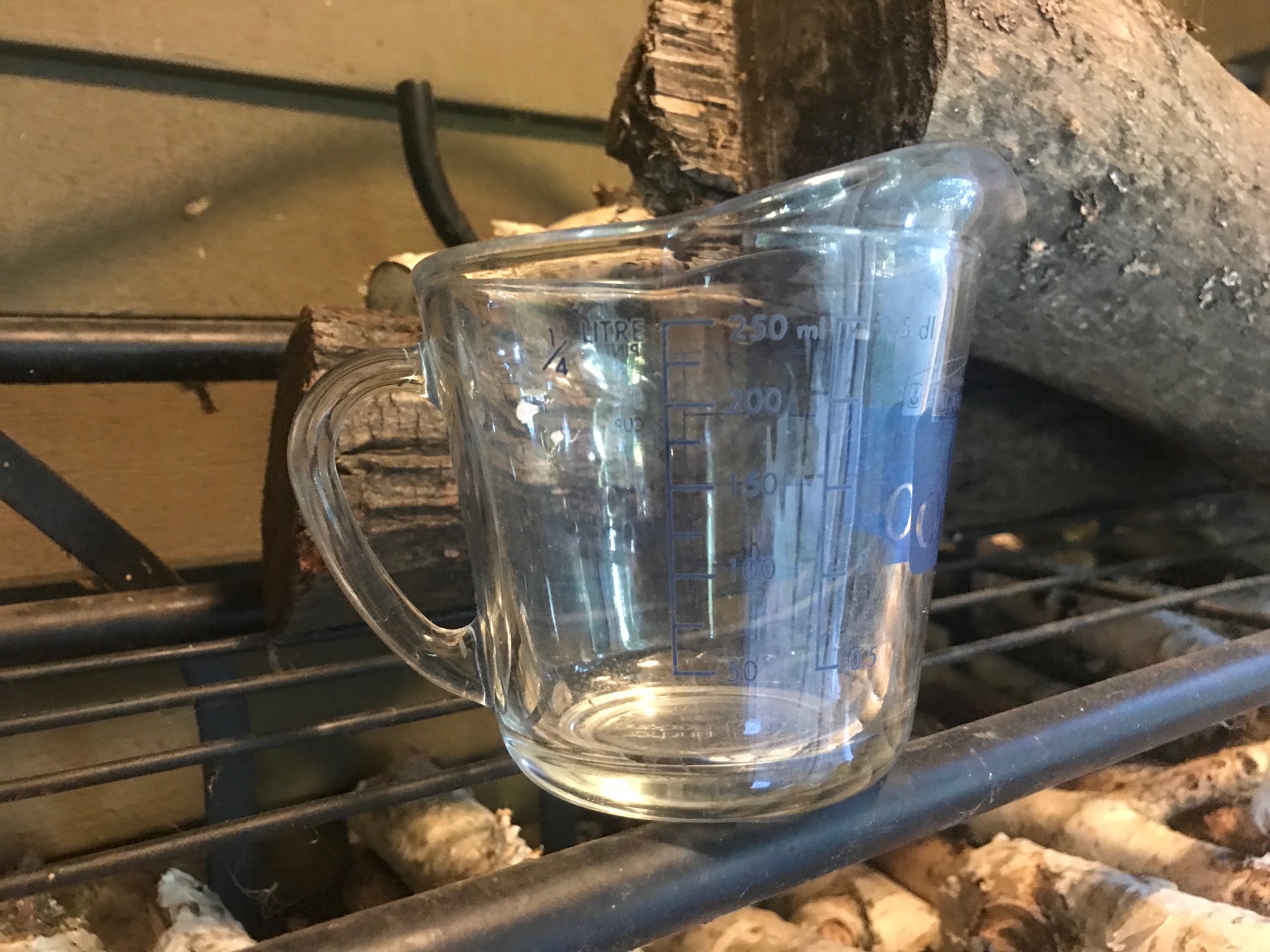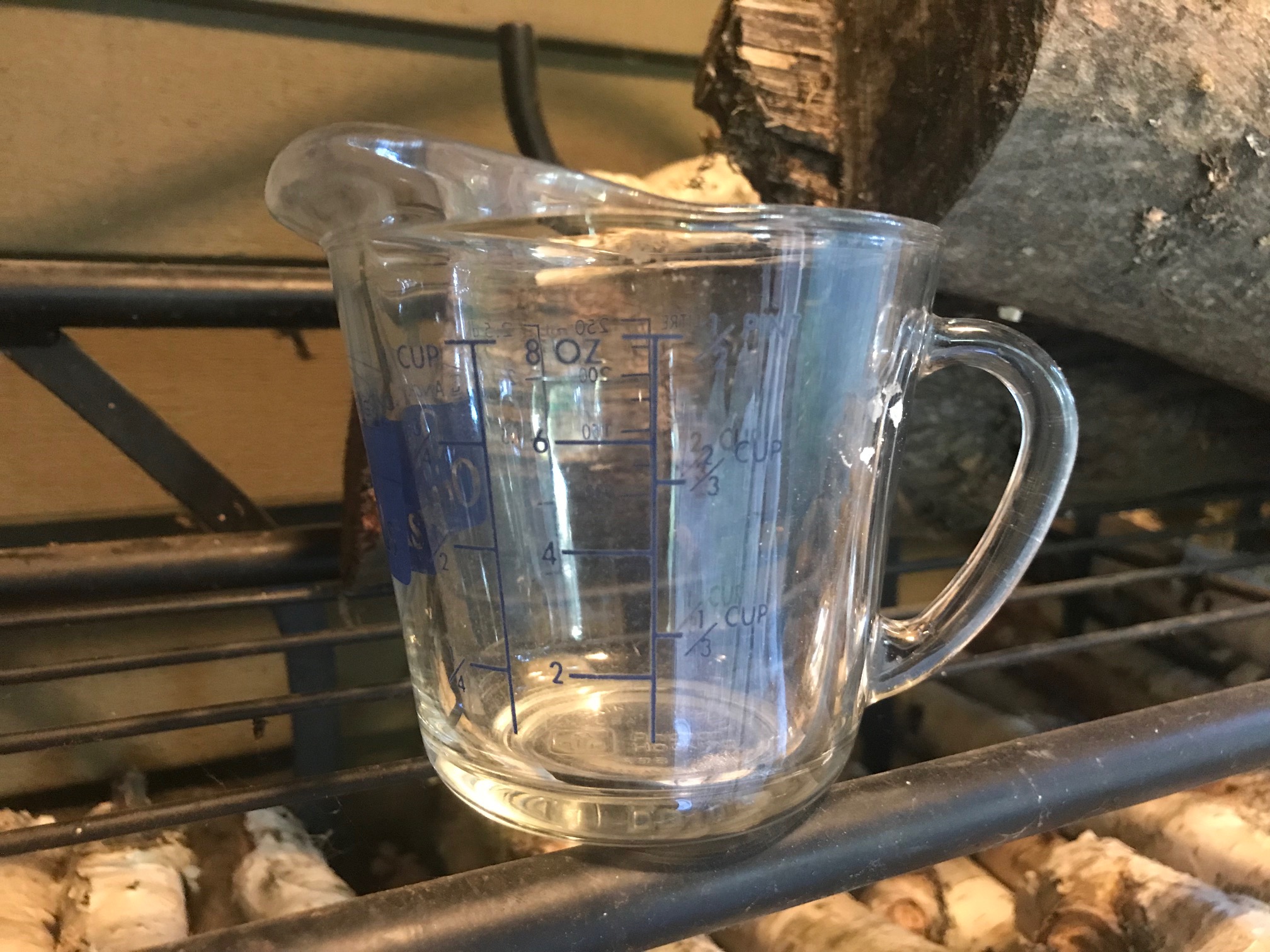Anchor Hocking Measuring Cup: 36,300 ppm Lead + 580 Cadmium. Are the markings on YOUR measuring cup worn?
 When tested with an XRF instrument, this Anchor Hocking “Oven Originals” (made in the USA) one-cup glass measuring cup with blue markings had the following readings:
When tested with an XRF instrument, this Anchor Hocking “Oven Originals” (made in the USA) one-cup glass measuring cup with blue markings had the following readings:
Blue painted markings:
- Lead (Pb): 36,300 +/- 1,000 ppm [causes brain damage if ingested or inhaled]
- Cadmium (Cd): 580 +/- 36 ppm [a known carcinogen]
- Antimony (Sb): 66 +/- 30 ppm [a known carcinogen]
- Zinc (Zn): 11,600 +/- 400 ppm
- Titanium (Ti): 4,283 +/- 256 ppm
- Cobalt (Co): 14,000 +/- 600 ppm
Clear glass of the measuring cup:
- Antimony (Sb): 81 +/- 17 ppm
- Vanadium (V): 75 +/- 19 ppm
- Titanium (Ti): 60 +/- 21 ppm
This item was tested for a minimum of 60 seconds, and tested multiple times to confirm the results. Testing is done with an XRF instrument used in “Consumer Goods” mode. Results are science-based, accurate, and replicable. The XRF used is the same instrument used by the United States Consumer Product Safety commission for testing consumer goods for toxicity.
Why is this much Lead a problem?
For context (so you have a better understanding of what the above numbers may indicate): newly-manufactured items intended for use by children are considered unsafe (and illegal) if the glaze, paint or coating is greater than 90 ppm Lead (as detectable with an XRF.)
Dishware (modern and vintage) is not regulated in the same way (or with the same strict standards) as toys and other items intended for use by children. In my opinion, dishware (which is also used by children, and especially items that are used for food preparation for children) should be regulated in exactly the same way (and with the same limits and regulatory standards) as toys and other modern items intended for use by children.
“But the painting is only on the outside of the cup, why is this a problem?”
Here are the many reasons why (in my opinion) it is a problem that there is very high Lead paint on the outside of a (fairly recently manufactured) measuring cup – that a family might use on a daily basis:
- The paint on the outside of these glass measuring cups wears off over time. Do you have one at home? Hold it up to the light to get a sense of how much the paint has worn.
- It just takes a microscopic amount of Lead to poison a human being. Literally – a microscopic amount. That’s an amount that you cannot see with the naked eye. If you can see a visible amount of wear in the painted markings on your measuring cup that is, by definition, much more than a microscopic amount that has worn off of that cup.
- You touch the outside with your hands. As the Lead paint wears off cups like these it can be transferred to your hands.
- You might stack these cups inside each other after you have washed them (when you put them away in the cupboard between uses). As the Lead paint wears off it can wear from the outside of one cup off into the inside of the larger cup. You don’t normally wash off the inside of a clean cup from the cupboard before you use it – so that microscopic amount of lead can wear into your food the next time you cook.
- You wash these in the sink or in your dishwasher with other dishes. As the Lead paint is worn off from the outside, it can wear into your kitchen environment (including your sink and your dishwasher.)
While I am fairly certain there is no single documented case of someone being poisoned by their measuring cups, the Lead paint wearing off in to your home for normal use of the item can add to your aggregate body burden of Lead over your lifetime. This (along with other low-level exposures) has the potential to create a lifelong impact on the user. This is especially egregious given there ARE INEXPENSIVE LEAD-FREE options out there – and given the company has taken NO RESPONSIBILITY, and made no announcement, or recall to let consumer know that they are using a product in their kitchens (again, likely on a daily basis) that is painted with (very high-Lead-content) Lead paint.
For an inexpensive Lead-free measuring cup on Amazon (sold by the same company as this Leaded one!) – here’s one affiliate link: https://amzn.to/2ZskpR9
For additional context… This cup tested positive for Lead paint that was more than 35,000 ppm Lead. The United States Department of Housing and Urban Development (HUD) uses federally funding for interventions in houses of low-income families [they consider it officially an “Emergency” – enough so that the work is publicly-funded] if the paint exceeds 5,000 ppm Lead.
So… knowing these things… might you want to consider using a Lead-free measuring cup?
As you can see from other cups I have tested and reported on on my website, SOME of the newer glass measuring cups with painted markings are Lead-free [some have unsafe levels of Cadmium or Antimony]. As the average consumer (who doesn’t have access to an XRF instrument that costs between $30,000 and $50,000), you simply cannot know whether the painted markings on your measuring cup is Lead-free. Accordingly, I recommend that consumers avoid measuring cups with painted markings – or any painted decorative elements.
To see more measuring cups I have tested, click here.
To see more Anchor Hocking brand pieces I have tested, click here.
For more guidance and choices in Lead-free measuring cups, click here.
As always, please let me know if you have any questions.
Thank you for reading and for sharing my posts.
Tamara Rubin
#LeadSafeMama
*Amazon links are affiliate links. If you purchase something after clicking on one of my links I may receive a small percentage (usually 4 to 6%) of what you spend at no extra cost to you.

Never Miss an Important Article Again!
Join our Email List



